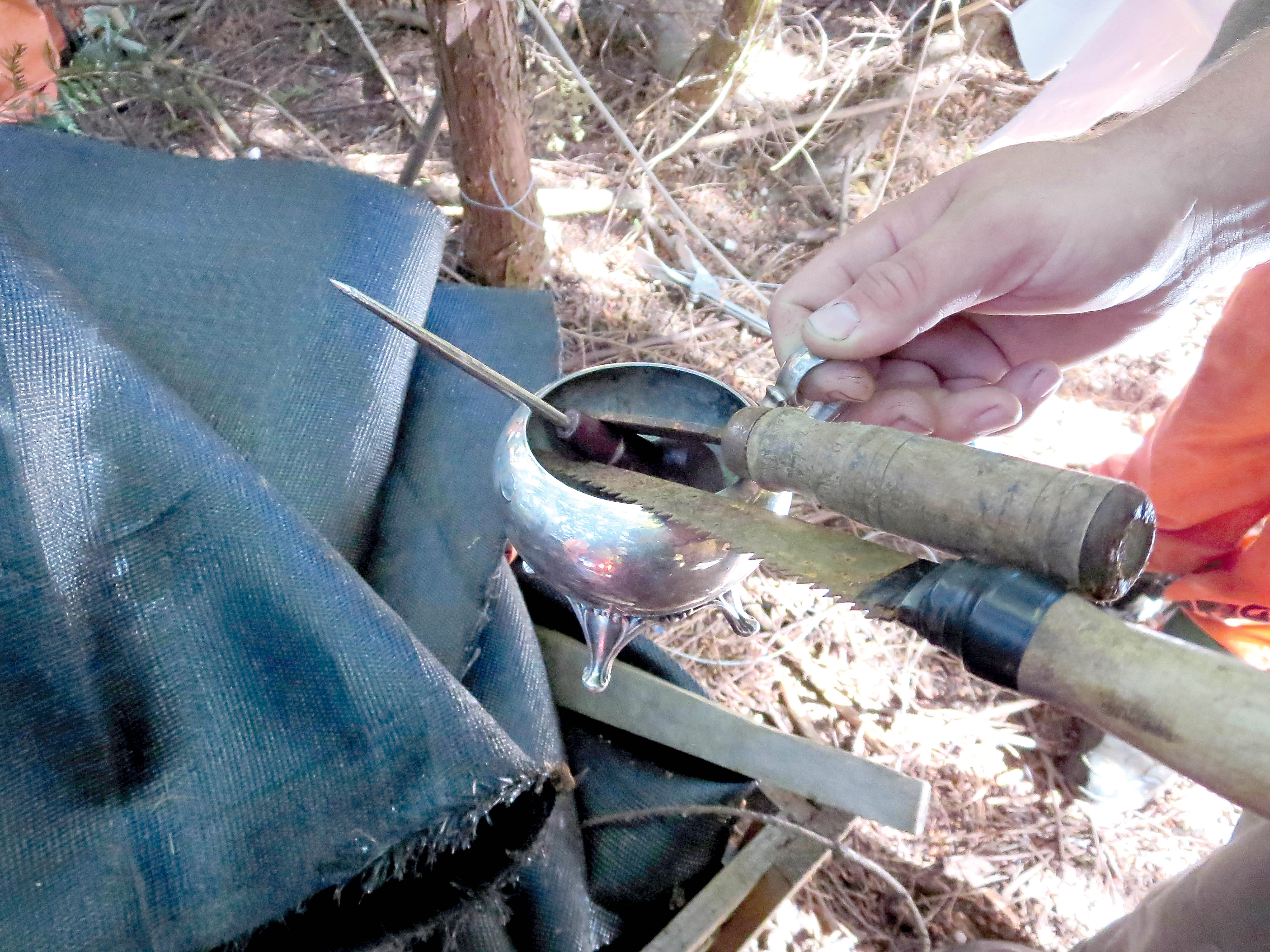Editor’s note: This report has been corrected to reflect the proper location of a homeless camp site in a small dilapidated building near the intersection of East First and North Race streets in Port Angeles.
Police in three of the four North Olympic Peninsula cities have noticed an increase in the number of homeless people in recent years.
This comes as both Port Angeles and Forks police are planning organized efforts later this year to clean up common homeless camp sites in the two cities.
“This is a constant, long-term problem, people who reside illegally in the open,” said the Port Angeles deputy chief, Brian Smith after a recent cleanup.
Police Administrator Rick Bart noted a similar situation in Forks.
“It’s a real issue with us, too; especially in the summer,” he said.
Port Townsend officers have seen only the usual warm-weather increase in the numbers living outside, said Officer Patrick Fudally, department spokesman.
In Forks, officers and private landowners have been working to identify problem areas within the city limits and are planning an organized cleanup later this year, Bart said.
Port Angeles cleanup
In Port Angeles’ first homeless camp cleanup of the year, Officer Clay Rife accompanied Clallam County Sheriff’s Deputies Steve Brooks and Nate Clark and two jail inmate work crews, known as the Chain Gang, during a day-long cleanup.
They removed 3,660 pounds of trash from camp sites around the city on June 30.
“Over the years, there’s been an uptick in the amount of folks that are camping around,” Rife said.
The crews removed five camps, two dump sites and one small derelict building, Smith said.
Items collected included old clothing, tents, garbage, improvised weapons and drug paraphernalia.
Such camp sites can quickly become contaminated with garbage and human waste, Smith said.
The sites were on the south end of the Rayonier mill property just north of Leitz Farms Inc., along Front Street; a small dilapidated building near the intersection of East First and North Race streets; and on a small hill near the intersection of East First and North Chase streets, Rife said.
‘Problem area for years’
“That area has been a problem area for years,” Rife said of the site at First and Chase streets.
Property owners were contacted before cleanup work began, Rife said.
Rife said he spoke with a man found at one of the sites on Rayonier property, and he cooperated when he was asked to clear his camp from the private property.
No other people were found during the cleanup work, Rife said, adding that officers try to contact those living in the camps before cleanup begins.
It is illegal to camp or otherwise live in a non-residential dwelling within city limits, Smith said.
“We didn’t issue any citations this time, but in the past we have,” Smith said.
Last August, Port Angeles police coordinated with the chain gang for the removal of 2,900 pounds of garbage from illegal campsites along Front Street, the Waterfront Trail, under City Pier and around Estuary Park.
Smith said more work is planned in Port Angeles, though specific spots had not yet been nailed down as of last week.
Homeless numbers
Kathy Wahto, executive director of Serenity House of Clallam County, told Clallam County commissioners in June that housing assistance at resource centers in Port Angeles, Sequim and Forks spiked 50 percent from the first quarter of 2013 to the first quarter of this year.
Wahto said a countywide homeless count in January logged 352 homeless or at risk of being homeless in January, including 59 who were living on the streets, in cars or in tents.
Last year, 407 homeless or at-risk people were counted, with 38 being unsheltered or “literally homeless,” Wahto said.
Sequim: More in cars
Sequim Police Chief Bill Dickinson said there seem to be more homeless people living in their cars in Sequim recently.
“Homelessness is an issue in Sequim,” Dickinson said.
Dickinson said Sequim police see most often homeless people living out of their cars, which they move between various places in the city, and some in vacant homes.
“Not everyone is living in the woods,” he said.
Sequim police have not required help from Clallam County jail work crews to remove campsites or dump sites left by homeless people, Dickinson said.
“We have not asked for their assistance. Typically [camps are] not that frequent of an occurrence for us,” Dickinson said.
Areas that do need to be removed or cleaned up are typically addressed by city public works staff, Dickinson said.
Forks sites
In Forks, Bart said homeless camps tend to appear on wooded pieces of private property, Bart said.
Sites have been reported on the north end of town near the Calawah River.
“It’s quite significant in a couple of places,” Bart said.
Kah Tai in Port Townsend
Officer Patrick Fudally, spokesperson for the Port Townsend Police Department, said Kah Tai Lagoon Nature Park in the heart of the city has historically been the most common place to find homeless camps.
The number of camps have decreased in the park with increased officer foot patrols.
“We sort of deal with them as we find them,” Fudally said, adding that both officers and city parks and recreation staff remove the camps.
Reports of camps become more common in the spring and summer, Fudally said, though police have not necessarily noticed an increase in the overall number of camps.
“Not necessarily an uptick overall, just sort of a yearly thing we go through as spring and summer hit,” Fudally said.
________
Reporter Jeremy Schwartz can be reached at 360-452-2345, ext. 5074, or at jschwartz@peninsuladailynews.com.
Reporter Rob Ollikainen contributed to this report

